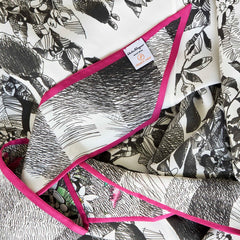
Here is an initiative that attracts our attention and delights us! Today there are ways of making textiles that are completely unexpected and so commendable. You may be surprised to know that we have the technologies to make fabrics from bananas , soybean peels , red wine and orange peels! It is the textile made from orange peels that catches our attention today: surprising and so intelligent!
A zero waste textile!
When we know that the United States is among the largest producers of citrus fruits in the world and that they produce up to 16 million metric tons per year by transforming 90% of them into juice, it is really easy to see that orange peels are an abundant primary resource.
Noting that citrus waste was estimated at 700,000 tonnes per year in Italy and taking into account that their elimination has high ecological and economic costs, solutions were sought. In 2013, in collaboration with a Milanese university, the Italian company Orange Fiber managed to bring together two important pillars in Italy: It uses citrus fruit waste to make the most ecological fabric! Isn't this a great way to unite the food and clothing sectors?

The fabric that emerges from this transformation is formed from a silk-like thread that can mix with other textiles. When used in its purest form, the resulting 100% citric textile is soft, silky, lightweight and ultra durable. It can also be opaque or shiny depending on needs.
And its accessibility?

We're not there yet! Like any innovation, the beginnings entail development costs, rarity and therefore an exorbitant price. For the moment, only one American designer uses this textile. Since 2017, Salvator Ferragomo has designed scarves and a cardigan with this fabric. Prices: between 150 and 1000$ US... We cannot say that it is accessible to ordinary mortals!
What else can you do with orange peels?

Well, chemical textile dyes are found to be extremely harmful to the environment and health. An approach is initiated by Caroline Fourré at the Zurich University of Applied Sciences and aims to use fruit and vegetable residues, including orange peels, to develop textile dyes and to promote them locally. industrial scale.
In any case, despite the price of making things with this fabric, the fact remains that this kind of initiative is refreshing. The reuse of raw materials is certainly an important element in a sustainable future. This fabric does not use topsoil like linen, hemp and cotton textiles. This is a significant point to consider, particularly in a growing world population!
Ecologically yours,














0 comments